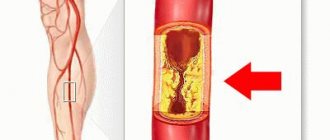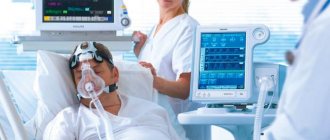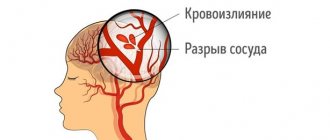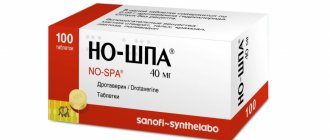VSD (vegetative-vascular dystonia) is a syndrome that occurs when the function of the autonomic nervous system is impaired.
Neurologists at the Yusupov Hospital are identifying the cause of autonomic dysfunction using modern research methods. To treat patients, drugs are used that relieve or reduce the symptoms of VST, psychotherapeutic methods and innovative methods of rehabilitation therapy. Due to the variety of symptoms of VSD, gastroenterologists, endocrinologists, cardiologists and other related specialists are involved in the treatment of patients. Severe cases of VSD that cannot be treated are discussed at a meeting of the Expert Council, in which professors and doctors of the highest category take part.
Causes of VSD
Doctors diagnose VSD if the following symptoms are present:
- weakness, loss of ability to work;
- sensations of goosebumps all over the body;
- heartbeat;
- body aches;
- trembling hands.
Vegetative-vascular dystonia can develop in the presence of constitutional characteristics of the body or burdened heredity. The autonomic nervous system can be exposed to traumatic factors during fetal development or childbirth. In most cases, vegetative-vascular dystonia syndrome is a manifestation of a disease of internal organs and dysfunction of the endocrine glands.
The occurrence or exacerbation of VSD is provoked by the following factors:
- changes in weather conditions;
- physical or mental fatigue;
- stress;
- unbalanced diet;
- wrong lifestyle;
- imbalance of hormones during puberty or menopause;
- sleep quality disturbances.
Body pain, numbness of the left or right arm, weakness in the legs with VSD occur after emotional stress. Patients “break” their arms and legs, their hands tremble, and body aches appear even after minor stress. A vegetative crisis can cause both negative and positive emotions.
Symptoms of vegetative-vascular dystonia
In patients of different ages and genders, the disease can manifest itself in completely different ways. However, certain common features can still be identified.
Thus, common symptoms of VSD include the following:
- fast fatiguability;
- lack of air, shortness of breath, suffocation;
- difficulty or rapid breathing;
- feeling of tightness in the chest, pain in the heart;
- rapid heartbeat, arrhythmia;
- decreased appetite;
- nausea, heartburn, flatulence and other gastrointestinal problems;
- frequent urination;
- increased sweating;
- chills, coldness in the extremities, numbness;
- change in skin color (blueness, pallor, redness);
- anxiety, restlessness;
- restless sleep;
- weather sensitivity, etc.
Such manifestations not only have a detrimental effect on the emotional and physical state of patients. Finding yourself with several symptoms from this list gives good reason to visit a doctor. In addition to vegetative-vascular dystonia, the listed signs may indicate organic and cardiovascular pathology, hypertension, chronic coronary heart disease, bronchial asthma, anemia, allergies, and endocrine disorders.
Symptoms of VSD
With vegetative-vascular dystonia, the following signs of autonomic dysfunction occur:
- panic attacks;
- increase or decrease in blood pressure;
- heart rhythm disturbances;
- chills or sweating;
- increase in body temperature to 37.3°C;
- weakness in arms and legs;
- body aches.
Patients report that their hands are trembling, they constantly have “goosebumps all over their bodies,” and their arms and legs are “burning.” Twitching of the muscles of the face, upper and lower extremities, headache, nausea and vomiting, and pale skin occurs. Fainting often occurs, and patients continue to feel anxious. Often, darkening of the eyes and severe weakness with VSD occur with a sudden change in body position. When experiencing symptoms of VSD, a person begins to become afraid of them. This further enhances vegetative manifestations. A vicious circle is formed from which it is no longer possible for the patient to get out on his own. A person who has experienced a panic attack experiences fatigue, emptiness, lethargy, and drowsiness. In this case, psychotherapists from the Yusupov Hospital work with the patient.
Cases from practice
Woman, 28 years old, manager.
A young woman came to the Clinical Center for Autonomic Neurology with complaints of a sleep disorder. Since August 2014, I could not sleep at night until 5-6 am 2-3 times a week. Since January 2015, there has been a feeling of heaviness in the chest during insomnia. Since the beginning of February, there have been attacks of general weakness and faintness.
The patient also experienced numerous other symptoms of the disease: tinnitus, tension in the eyes, attacks of shortness of breath, increased anxiety, very frequent headaches, and a burning sensation in the back of the head. The woman was examined at the Department of Nervous Diseases - the doctor diagnosed VSD and prescribed antidepressants. This treatment did not bring relief. The headaches went away after taking a Nise tablet or walking in the fresh air.
At the Center for Autonomic Neurology, a study of heart rate variability showed that the woman’s body was under enormous stress, trying to adapt to the most basic everyday physical and mental stress. A thermal imaging study showed a disruption in the functioning of several autonomic centers of the nervous system.
4 months after the first course of treatment, the patient’s sleep problems disappeared. In the second month after the repeat course, my general well-being completely improved.
Male, 37 years old, TV director.
The man contacted us in September 2013. Over the past 2 years, the patient has been bothered by insomnia at night, fatigue during the day, increased sweating, a feeling of numbness in the limbs, constant heaviness in the head, aches and stiffness in the neck, and periodic discomfort in the chest area.
The man could not sleep until 3-4 am. During the night's sleep I woke up 2-3 times a night and had difficulty falling asleep again. In the morning I got up completely tired and broken. During the day I experienced drowsiness and loss of strength.
The patient’s work was related to television, and therefore involved serious physical and psycho-emotional stress: irregular work schedule, stressful situations.
The patient underwent one course of treatment at the Autonomic Neurology Center. Within two months he resumed active work. After a few more months, there was a steady improvement in the general condition. The man felt absolutely healthy, calmly endured the stress of work, and sleep problems no longer bothered him.
Diagnosis of vegetative-vascular dystonia
Body aches, weakness in the arms and legs, and a crawling sensation can be symptoms of many diseases. Neurologists at the Yusupov Hospital conduct a comprehensive examination of patients with signs of VSD. Instrumental studies are carried out using the latest equipment from leading global manufacturers. For laboratory research, high-quality reagents are used to obtain accurate test results.
The cause of pain in the body, crawling sensations, numbness of the limbs, trembling of the hands may not be VSD, but organic lesions of the brain. At the Yusupov Hospital they are excluded or confirmed using magnetic resonance imaging. When performing an MRI of the brain using special modes, doctors see changes in the brain tissue itself.
If a patient with VSD has blood pressure that rises infrequently, these changes are reversible. With persistently high blood pressure, dyscirculatory encephalopathy develops. More often, such changes occur in areas of the brain with initially reduced blood flow. In the process of diagnosing the causes of VSD, a clear analysis of the cerebral vessels is necessary. Such a study is carried out at the Yusupov Hospital using the latest generation MRI machines using special MRI programs. They make it possible to determine the state of cerebral vessels without administering contrast. Timely assessment of the state of the brain is important for the prevention of hypertensive crises, since hypertensive VSD can result in a cerebral stroke.
An important addition to MRI studies for VSD is ultrasound of the vessels of the brain and neck. It shows the function of blood vessels in dynamics, allows you to navigate those parts of the VSD that are disturbed, clarify the cause of autonomic dysfunction and make a decision on the choice of treatment tactics. Ultrasound examinations at the Yusupov Hospital are carried out using expert-class equipment. In order to identify vascular disorders of the brain and VSD in particular, doctors analyze the venous component of cerebral blood flow. For this purpose, unique diagnostic developments are used, which make it possible to determine with a high degree of reliability the nature and cause of VSD using computer and ultrasound analysis of slow and fast cerebral venous blood flow.
Treatment and prevention of VSD
Neurologists at the Yusupov Hospital begin treatment of VSD with symptomatic therapy. If vegetative-vascular dystonia manifests itself as a decrease or increase in blood pressure, it is stabilized. As part of the treatment of VSD, pharmacological drugs of several groups are used:
- peripheral vasodilators and antispasmodics;
- calcium ion antagonists;
- calcium channel activators;
- centrally acting angiotensive drugs;
- sympatholytics;
- drugs affecting the angiotensin system
- diuretics.
- psychotropic drugs.
More fine regulation of vascular tone in the treatment of VSD is carried out with the help of drugs that affect the sympathetic part of the nervous system - sympatholytics or sympathomimetics. Ganglion blockers act on the adrenal medulla, simultaneously affecting an important anatomical link in the central regulation of stress reactions.
Treatment of VSD with diencephalic crises is a different level of impact. It involves effects on the brain. For this purpose, doctors at the Yusupov Hospital prescribe vegetotropic drugs to patients suffering from vegetative-vascular dystonia. Their point of application is the sympathetic or parasympathetic part of the nervous system. Drugs act through the cortex and some associated subcortical structures of the brain. Reflexive methods of influence that are used by rehabilitation specialists at the Yusupov Hospital have a sedative effect:
- acupuncture;
- metameric receptor effects;
- craniotherapy (cerebral and scalpel acupuncture);
- RANC therapy (impact on the cause leading to the appearance of symptoms of VSD).
Prevention of VSD is of no small importance, especially if it is accompanied by trembling of the hands, numbness of the arms and legs, and weakness in the limbs. Rehabilitators use effective methods of physiotherapy, various types of massages and proprietary methods of influencing the autonomic nervous system. A senior exercise therapy instructor-methodologist individually selects a set of therapeutic and breathing exercises that helps prevent vegetative crises. Psychotherapists, using innovative techniques, teach patients to cope with stress and calmly deal with the manifestations of VSD. You can undergo a course of VSJ therapy by calling the Yusupov Hospital.
Is it possible to become cheerful again and stop getting tired?
Certainly!
Flowers from a bright bouquet of VSD bloom magnificently only because they are regularly watered. It’s worth reconsidering your lifestyle, and everything will start to improve. Yes, it will not be easy to cope with the nervous system, which is special, playful and unpredictable in a VSD person. But many dystonics have already learned to negotiate with her, and there is now much less adrenaline in their lives. First of all, undergo a full examination to make sure that your body is in perfect order, as it always has been. This will soften hypochondria and allow you to look at many things with adequate eyes.
Then visit a psychologist who will become your assistant on the path to healing. If the condition is severe, it is better to visit a psychotherapist to prescribe medication support.
Get used to dealing with adrenaline rushes. As soon as you feel stress approaching, calm down, relax, distract yourself with your favorite activities. If it was not possible to prevent the release of adrenaline, speed up its “evaporation” from the body. Just walk around the room in circles, do some simple exercises, dance. Movement helps adrenaline to be released faster.
Yes, and stop complaining to your family that you are dying and it’s hard for you to even yawn. Excessive pity (or, conversely, tired indifference) of household members will only reinforce your illness.










